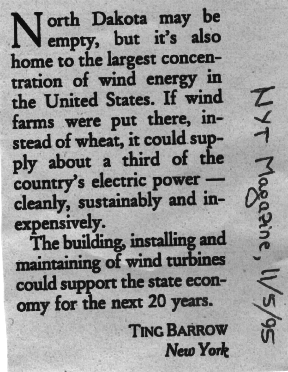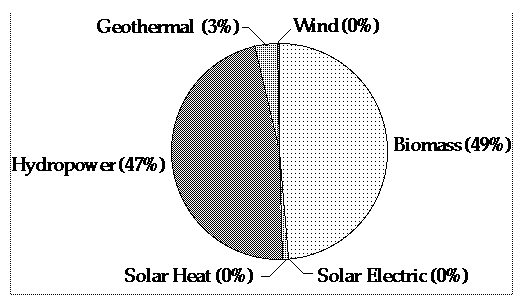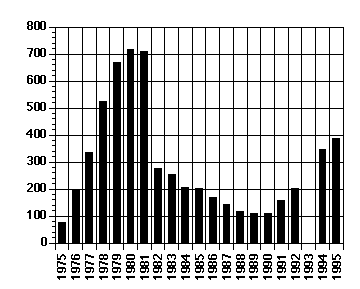RENEWABLE ENERGY SOURCES
There is much talk, but not much action, about renewable (or nondepletable) energy. (The optimistic 'soft path' scenario, advocated since 1977 by Amory Lovins, is far from being a reality today.)
Here is a very recent example. In response to an article in The New York Times Magazine, provocatively entitled "Who needs North Dakota?", the following letter was published on 11/5/95.

The emphasis in this note is on the words 'if' and 'could'. The reality is that there aren't many electricity-producing wind turbines in North Dakota (or in the U.S. for that matter). It is true that the potential is great for generating electricity from wind in places where the winds are strong and steady, and there are quite a few of those (see map). But the current contribution of renewable energy to the U.S. supply is only 6 quadrillion BTU (i.e., less than 10% of the total energy supply).
More than 95% of renewable energy supply is accounted for by conventional wood burning and hydroelectric power, as shown below:

The future of solar, geothermal and renewable biomass energy depends to a large extent on research and development efforts. Here is a record of federal government funding of renewable energy R&D (in millions of dollars).

An all time high was reached right after the oil crises of the 1970's. It remains to be seen whether the current concerns about air pollution and the greenhouse effect will lead to substantial increases in R&D support.
lrr3@psu.edu (last revised 12/6/95)



